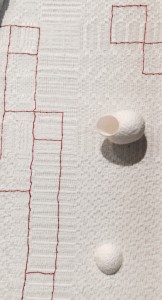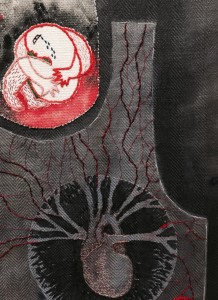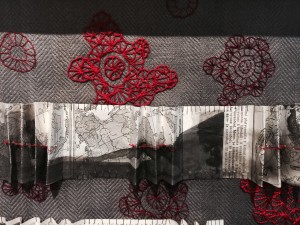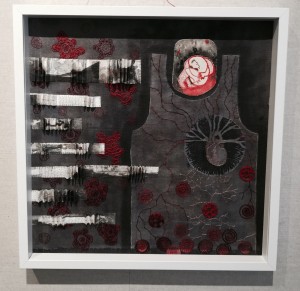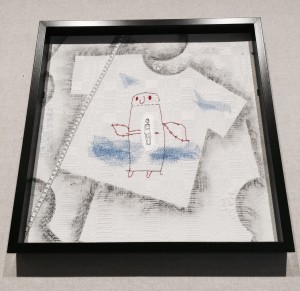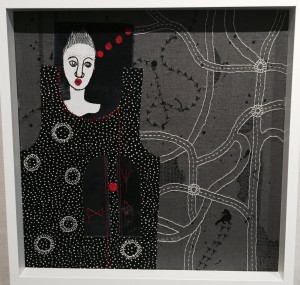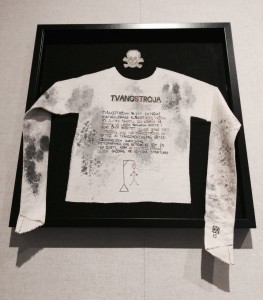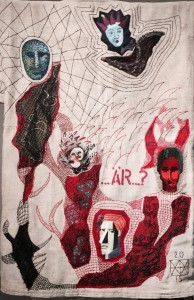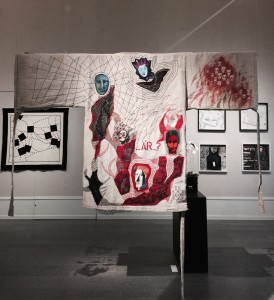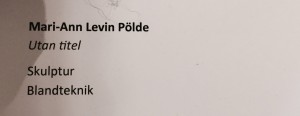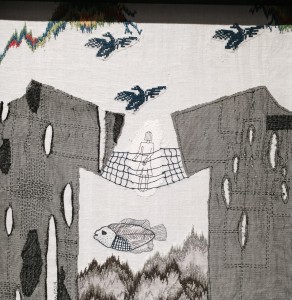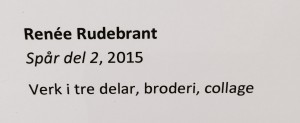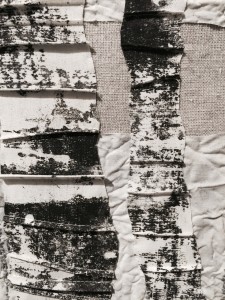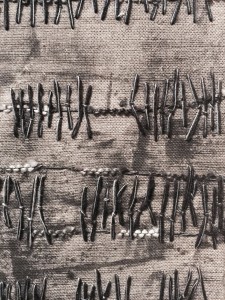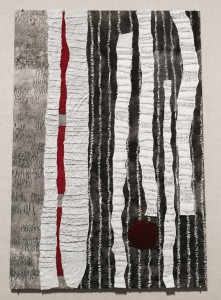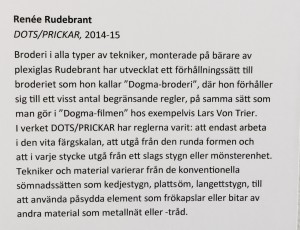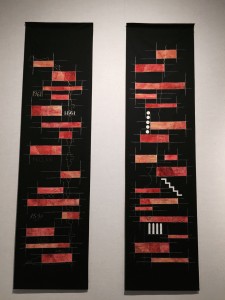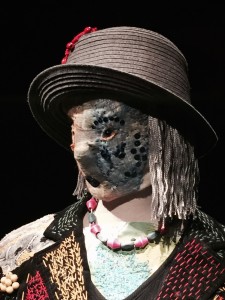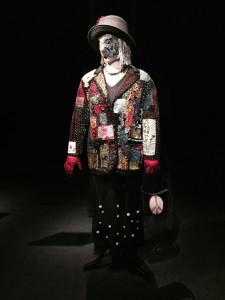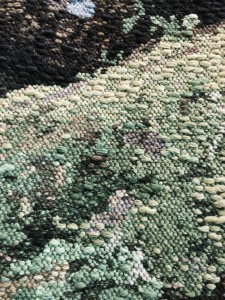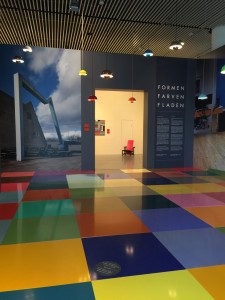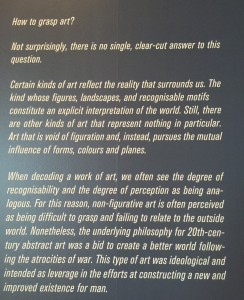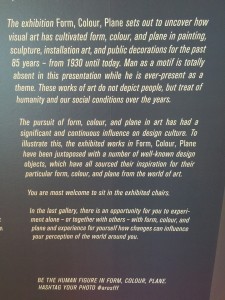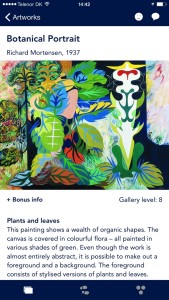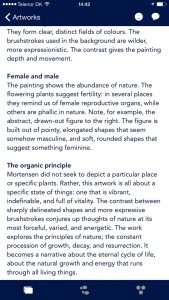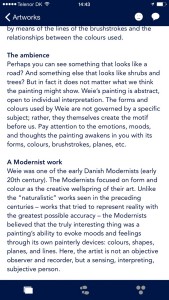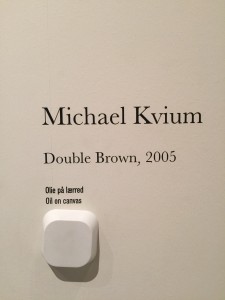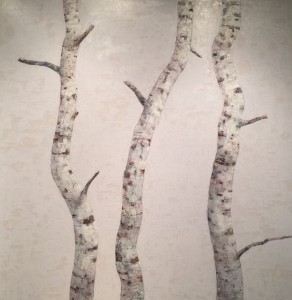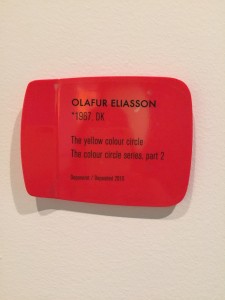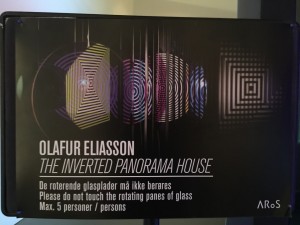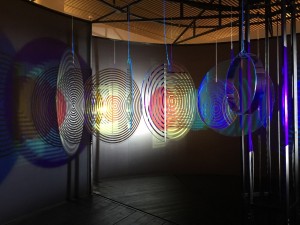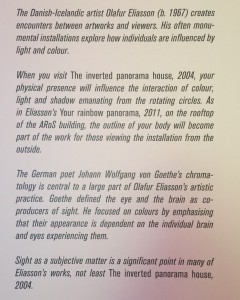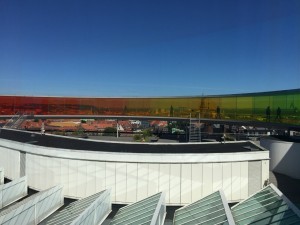As part of planning for my summer 2015 Scandinavian adventure I was delighted to find out about the Traces of Life exhibition, a collaboration between Textile Study Group in the UK and Swedish group Textil13.
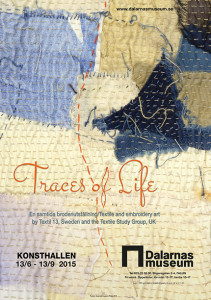
So added Dalarnas museum in Falun in Sweden to the route and was far from disappointed.There are links to a couple of articles about the exhibition that are quite descriptive with some good photos.
My first impressions, noted in my travel journal are; first the generous space -light and airy with natural light filtering through gauzy window coverings. Five rooms with different wall treatments, work wall hung, suspended, or on plinths, to optimize the presentation of the work.
The Rebozo exhibition at the Fashion and textiles museum was an eye opener. This is the first exhibition dedicated to contemporary textile artists, specifically stitched work in this case, that I have seen, and it was wonderfully exciting and inspiring.
I have the catalogue for the exhibition, it has an artist statement and one example piece of work. it was useful to have some insight whilst looking at the art. It is interesting to see which pieces were chosen for the catalogue compared to the impact the individual works had on me. It was interesting to compare what I read into the actual work before reading the statements, and also just how much more richness there is in seeing the pieces in real life compared to a book or website. I was almost as enthralled with the shadows cast, and slight movement of the fabrics as I was with the beautifully textured surfaces. I also really appreciated that there was enough trust in the general sensibleness of the public, that there were no alarmed barriers and you could peer closely at all the treasures. (I forever embarrasingly set off alarms in UK exhibitions- never with intent to touch, but just to really look closely)
In the first room on the opposite wall to the entrance I couldn’t help but be drawn to ‘Between me and the sky’ by Sian Martin. hung in front of a voile covered window with the ghost shadow of a steeple from the world beyond it hangs jewel like, moving gently with infrequent drafts. It really doesn’t compare with the photos that I had already seen
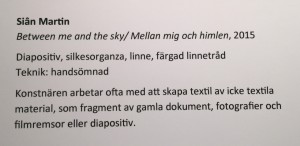
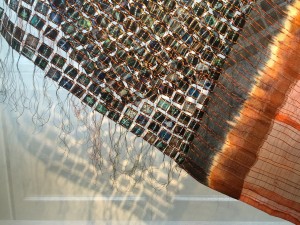
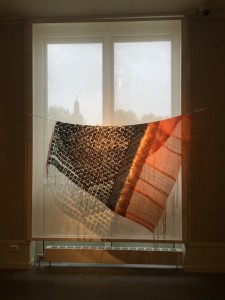
mixed media woven textile – silk organza, linen, photo slides.
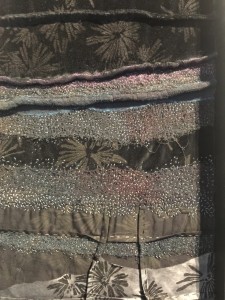
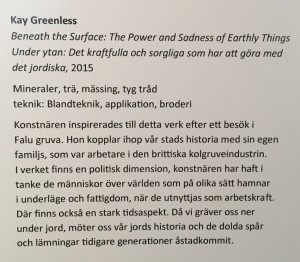
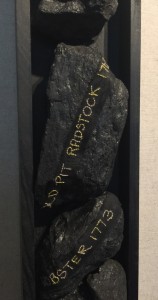
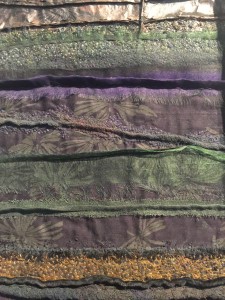
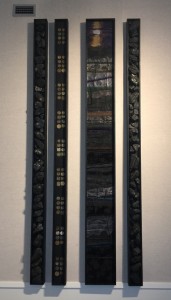
This work by Kay Greenlees connects the copper mining community in Falun and the British coal mining industry, Kay investigates through her work, worker exploitation, poverty, death and political manipulation. I found it a very powerful piece, raised thoughts about the generations of miners, treasures, pillars of the earth – miners and minerals, the dark colours spoke to me of the oppressiveness of govermnents destroying communities.
I really like the book Kay produced – Creating sketchbooks – its been a real treat since coming home to look at her sketch work and that of other artists in the exhibition that she included, really puts things in context.

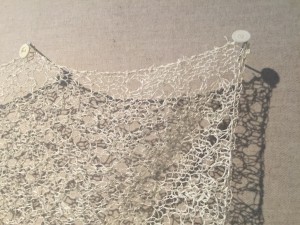
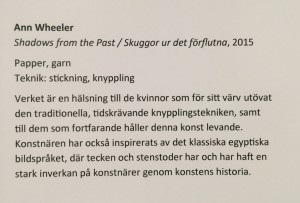
Gwen Hedley, what a joy to see her work , her book Drawn to Stitch is fabulous (again it has sketch and development work of several artists in the show) I love the contrast between the warmth and humour in her Casual Conversation pieces, Gwen paired up with Renee Rudebrant and they reflect some of the exchanges between the two artists, and the observation and execution of Bark Marks , and Restoring – which investigates erosion and represents patterns in old Swedish braids.

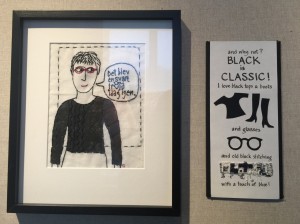
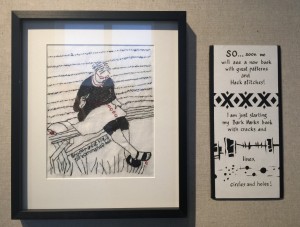

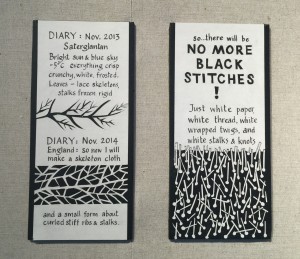
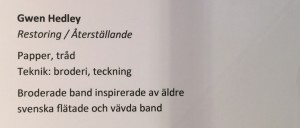
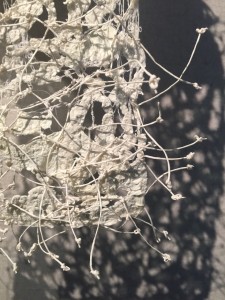




Kerstin Sapire – Beautifully observed and stitched works
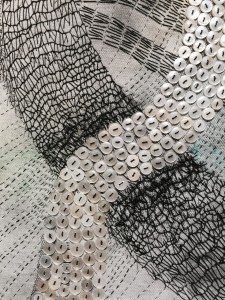
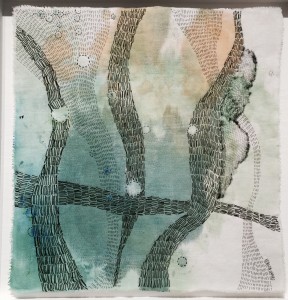

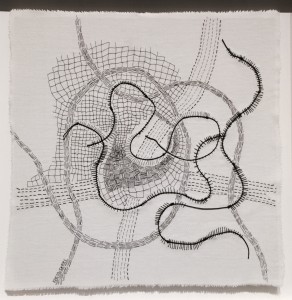
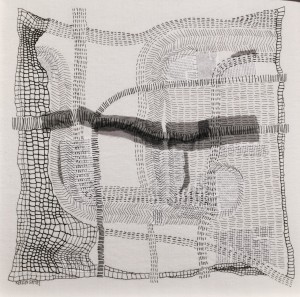
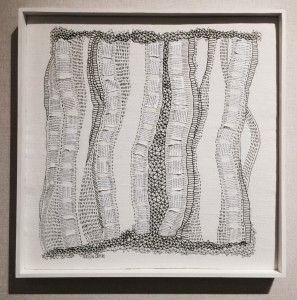
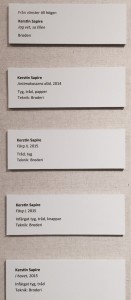
Elisabeth Kalvenes Skallsjo does not use sketches!!! she prefers to work freeform, and very lovely her work is too, very calming with some incredible textures – I think she must be super observant with a remarkable memory.
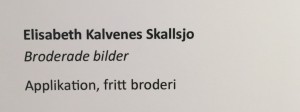
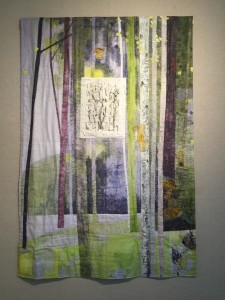
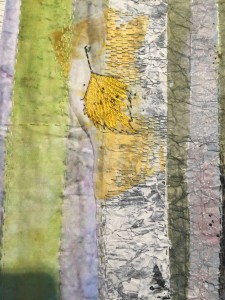
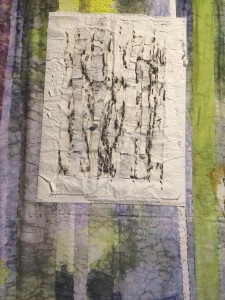


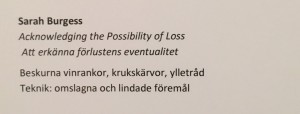

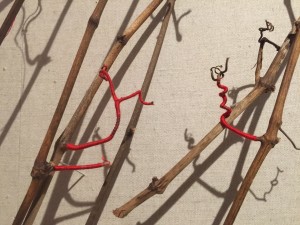
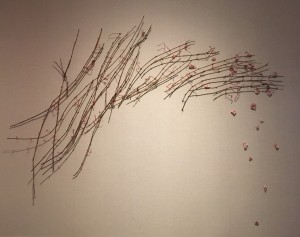
Sarah Burgess
Growing within the gallery this thicket of pruning celebrates the extraordinariness of being alive whilst acknowledging fragility and frailty
Burgess is interested in found materials which become objects of myth, metaphors for life and loss. wabi sabi. poetic simple beauty.
Anna Granberg
These creatures are over a meter lond and suspended so you have to look up at them, the shadows are magnificent and prolific due to multiple lights. The accompanying headphones played a soundtrack that took you from gentle buzzing insects and fairy piano to sirens and industry to bleak wind and disjointed piano, a post apocalyptic world where leached chemicals and over exploitation of nature takes its toll. The stuff of dark fairytales using reclaimed materials. Loved this. The sound made it a really imersieve experience.
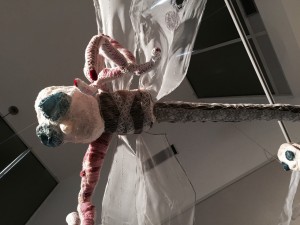

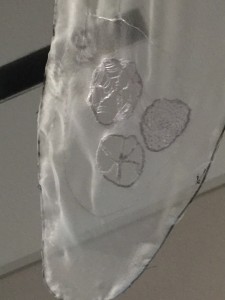
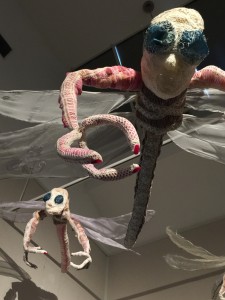

Alison King
This powerful piece recalls a sermon by James Black at the end of world war 1. I’ve taken a look at her website for some top tips about incorporating paper, image and stitch.
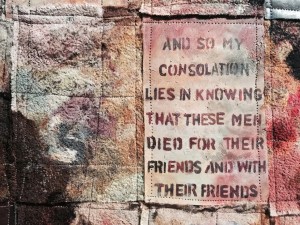
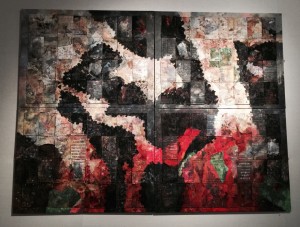

Sheila Mortlock
A completely different perspective, looking down really felt different, I was big like Alice for a while…
Again some really interesting colour application and stitch marks.
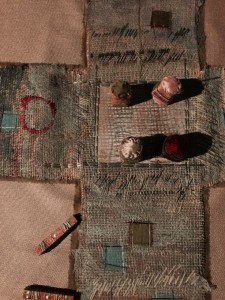
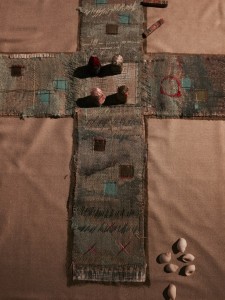
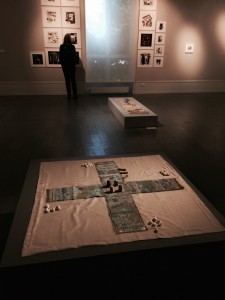
Jenny Bullen
With the hindsight of seeing the painting Double Brown at ARos this now reminds me very much of a birch tree, though there is nothing in the artist statement to suggest that this is so..
(I am super proud of learning hyperlinks in this blog, now I will endeavour to link to my own posts- like time travel!)
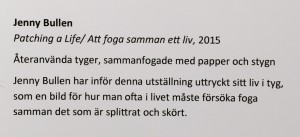
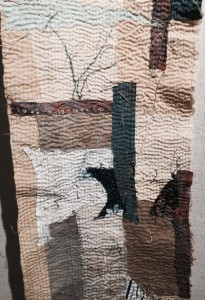
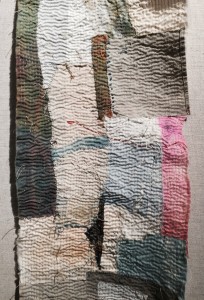
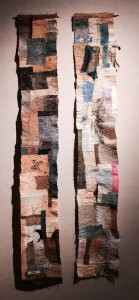
Jan Miller
I loved this work, simple in some ways, a very carefully considered less is more. I really want to investigate incisions and slash marks, my note book questions – Different implements will make different cut patterns ; blunt = ripped etc – I can start experimenting with the next project, preparing paper for stitch.
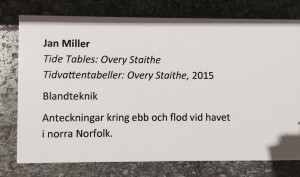

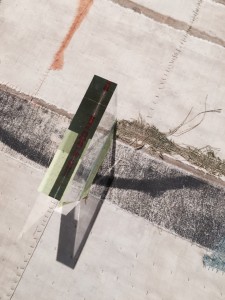

Kristina Blixt
In her artist statement Kristina says ” ‘Traces of Life’ is such a broad theme, therefore, the images and works have become very diverse.”
I found all her approaches interesting in different ways and although differing in approach they still felt cohesive.
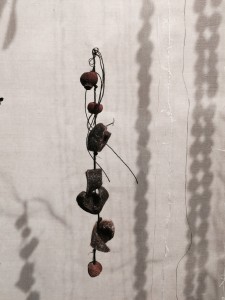

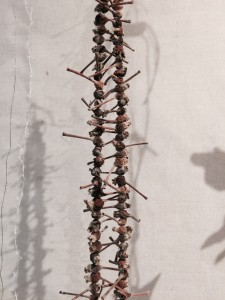

Nature Skor 2015 –
an intriguing collection of nature, I can imagine thinking about the ancient landscape, walking through Sweden like the ancestors, gathering, this feels totemic, shadows again seem an important part of the piece.
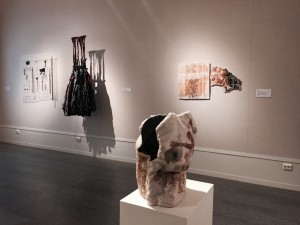
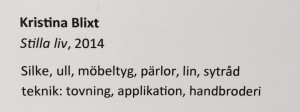
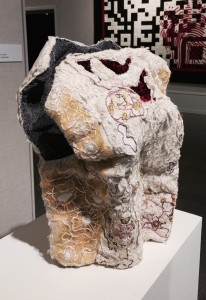
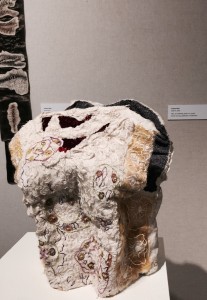
Beautifully textured felted bust. Stilla Liv? is this a husk of body with life moving on?
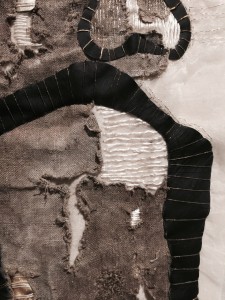

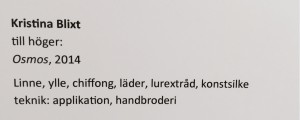
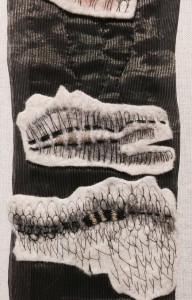

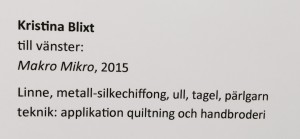
Lovely stitch work and interesting textures
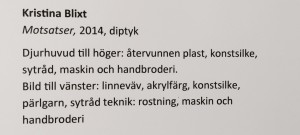
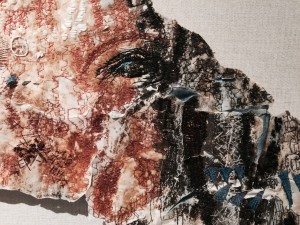


These took me back to the ancestors, like cave paintings I saw in France.


